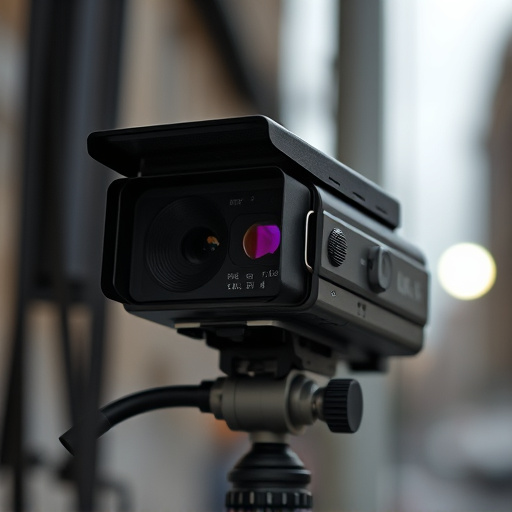Optimize outdoor dummy camera angle for enhanced security by positioning at visible angles near entry points with a 360-degree view, avoiding detection from nearby obstacles, pointing lens downwards for broader coverage, and ensuring adequate lighting for clearer footage.
Discover the power of a dummy camera with its iconic red blinking light for enhancing security and deterring crime. This guide unravels the mysteries behind this simple yet effective device, offering valuable insights into outdoor placement strategies. We’ll walk you through choosing the perfect camera angle for optimal visibility while providing practical tips for seamless installation. Elevate your home or business security measures with these expert Outdoor Dummy Camera Angle Tips.
- Understanding Dummy Camera Blinking Red Light
- Outdoor Setup: Choosing Optimal Camera Angle
- Tips for Effective Dummy Camera Installation
Understanding Dummy Camera Blinking Red Light
The red blinking light on an outdoor dummy camera is a crucial indicator designed to deter potential thieves and vandals, making it an essential component for home security. This light serves as a visible warning signal, suggesting that the area is under surveillance. Understanding when and why this light comes on is vital for homeowners looking to optimize their outdoor security setup.
When positioned at strategic angles, outdoor dummy cameras can provide comprehensive coverage while maintaining a discrete presence. By placing these cameras in areas with good visibility and regular movement, such as near entry points or along fences, you create an effective deterrent system. The red blinking light further enhances this effect, acting as a powerful visual reminder to intruders that they’re being watched.
Outdoor Setup: Choosing Optimal Camera Angle
When setting up an outdoor dummy camera with a red blinking light, choosing the optimal angle is key for effective surveillance and deterrence. Start by assessing the area you want to monitor—consider its layout, potential blind spots, and common entry points. Position your dummy camera at a height that provides a clear view of these areas while avoiding detection from nearby windows or trees.
A general rule of thumb is to point the lens slightly downwards, ensuring it captures any activity below without obstructing other parts of the scene. This angle allows for a broad field of view, covering more ground and providing comprehensive security. Additionally, positioning the camera at an oblique angle can help blend it into its environment, making it less obvious to potential intruders, thereby enhancing its effectiveness as a deterrent.
Tips for Effective Dummy Camera Installation
When installing an outdoor dummy camera, paying attention to the angle is crucial for maximizing its effectiveness. Positioning the camera at a strategic angle allows for wider coverage and ensures no blind spots. Aim for a 360-degree view by mounting it high enough to capture overhead and sideward areas as well. This setup helps detect potential threats or unusual activities from various angles.
Consider the environment where you’ll place the dummy camera. Natural obstacles like trees, buildings, or landscape features can affect its visibility and field of view. Arrange the camera’s position to minimize these obstructions while still offering a clear line of sight. Additionally, ensure the light is well-lit, especially if it blinks red for alert purposes. Proper lighting enhances the camera’s functionality, making footage clearer and more useful for security monitoring.
When it comes to enhancing security and deterring potential intruders, an outdoor dummy camera with its distinctive red blinking light offers a cost-effective solution. By strategically placing your dummy camera at the optimal outdoor angle, you can maximize its effectiveness. Following the tips outlined in this article, such as considering the lighting conditions and mounting height, will ensure your dummy camera installation provides peace of mind and a layer of protection for your property. Remember, the key to success lies in understanding the simple principles behind this powerful security tool.
